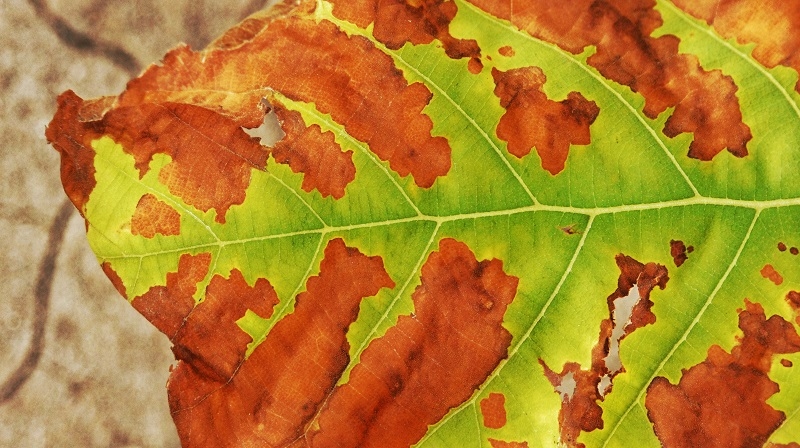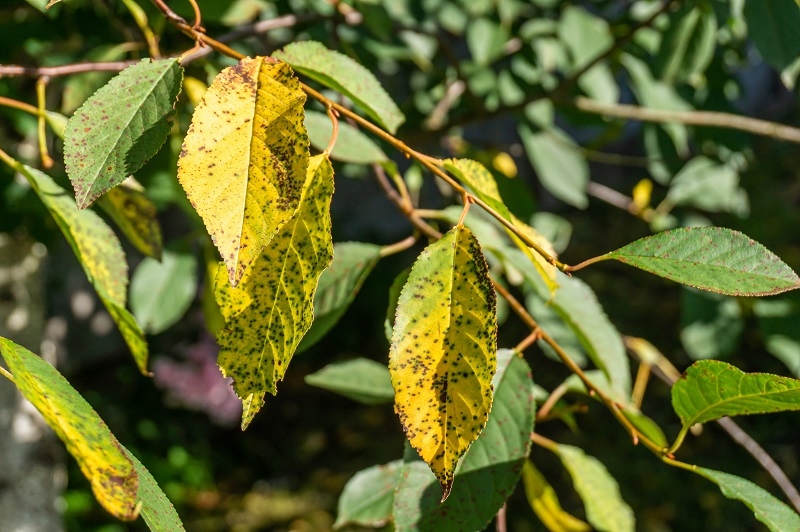
It always starts small. A few dark specks on your tomato leaves. Maybe a yellow ring around a patch on your basil. You think it’s nothing — maybe too much water or sun. But give it a few days, and suddenly, your once-healthy garden looks like it’s breaking out in freckles. That’s when it hits you: you’re dealing with bacterial leaf spot.
If you’ve never faced it before, it can look a lot like fungal leaf spot or just regular plant stress. But this one’s trickier. It spreads fast, ruins leaves, and can quietly destroy your garden’s rhythm before you realize what’s happening.
Don’t panic, though. This guide breaks down how to spot it early, what causes it, and how to treat it naturally — without turning your garden into a science experiment.
Let’s keep it simple. Bacterial leaf spot is a disease caused by different types of bacteria (like Xanthomonas or Pseudomonas) that attack plant tissue, especially leaves. It’s a common problem for vegetables, herbs, and ornamental plants alike.
It shows up as tiny water-soaked spots that turn dark and spread. Over time, these spots merge, and the leaf may yellow or even drop. The worst part? The bacteria can survive in soil, water, and on your tools — meaning if you don’t manage it right, it can come back next season.
And no, it’s not a sign you’re a bad gardener. It happens to everyone eventually — especially in humid, warm weather or when plants are crowded together.
One of the hardest parts is recognizing bacterial vs fungal leaf spots because they can look annoyingly similar. But here’s how you can tell the difference without needing a microscope.
Another easy test: take an infected leaf and put it in a sealed plastic bag overnight. If it looks slimy or smells foul in the morning — congratulations, it’s bacterial. Gross, but helpful.
Identifying it correctly matters because treatment methods differ. Fungicides won’t do much good against bacteria, and using the wrong fix wastes time while the infection spreads.
Understanding the causes of bacterial leaf spot helps prevent it from returning. The bacteria can spread through rain splash, contaminated soil, infected seeds, and — surprisingly often — dirty garden tools.
Here’s what typically sets it off:
Basically, moisture and poor hygiene are a bacteria’s best friends. Break that cycle, and you’ll stop most problems before they start.
Timing is everything. The earlier you catch it, the easier it is to manage. Look for these early signs:
If left unchecked, the bacteria can travel down the stems and affect fruits or pods too. Tomatoes, peppers, beans, and lettuce are frequent victims.
Check your plants regularly — especially after rain or heavy watering.
Once you’ve spotted the issue, you’ll want to act fast. But for edible gardens, chemical fixes aren’t ideal. Instead, focus on safe treatments for food plants that don’t ruin what you’re growing.
Here’s what actually helps:
Cut off the damaged leaves immediately and dispose of them away from your garden (not in compost — that just spreads it). Always clean your tools afterward.
A light copper fungicide or bactericide is often used for controlling bacterial issues. It’s safe for most vegetables when used correctly, but don’t overdo it. Copper can build up in the soil over time.
You can make an easy spray using 1 teaspoon of baking soda, 1 tablespoon of dish soap, and a litre of water. It helps neutralize the bacterial surface and keeps leaves clean.
Another option? Neem oil. It has mild antibacterial properties and can slow the spread while promoting healthier foliage.
Trim nearby plants, avoid watering from above, and let leaves dry fully before evening. Bacteria hate dry conditions, so your best weapon is airflow.
Remove old mulch and replace it with a fresh, dry layer. Infected debris in the soil can splash bacteria back up during watering or rain.
Consistency matters more than strength — a few steady habits will protect your plants better than one big fix.

This step gets overlooked more than anything else. Bacteria can survive on your shears, pruners, gloves, even watering cans.
Disinfecting garden tools after pruning or handling infected plants is essential. You can wipe them with rubbing alcohol or dip them in a bleach solution (one part bleach to nine parts water).
If you’re working with multiple plants, clean between each one. It might sound tedious, but it’s the difference between saving one tomato plant and losing them all.
And yes, clean your gloves too. You’d be surprised how often they carry the bacteria.
If bacterial issues keep coming back despite your best efforts, it might be time to choose smarter varieties. Many growers now offer leaf spot resistant plants, especially for tomatoes, lettuce, and beans.
These varieties have been bred to withstand bacterial or fungal attacks better than others. They’re not bulletproof, but they give you a head start.
When shopping for seeds or seedlings, check the packet for disease-resistance codes (like “Xv” or “BLS”). It’s a simple switch that can save you a lot of stress later on.
Fighting bacteria once it’s already spread is tough, so the best strategy is prevention. Here’s a few simple rules that keep your garden cleaner and stronger:
If you’ve had an outbreak, it’s wise to solarize the soil — cover it with clear plastic for a few weeks under the sun to kill lingering pathogens.
Even seasoned growers slip up sometimes. Here are a few habits that unknowingly make bacterial issues worse:
These small things add up. A few mindful changes will drastically reduce your garden’s risk.
Sometimes, despite your best efforts, the infection takes over. In that case, don’t waste energy fighting what’s already lost. Pull out the affected plants, disinfect everything, and replant after a short break.
Yes, it’s hard. But clearing out infected material stops the disease from spreading to neighboring plants. Think of it as hitting the reset button for a cleaner, healthier growing space.
If it helps, remember that even professional farmers deal with bacterial leaf spot every season. It’s not about avoiding it forever — it’s about responding smartly when it shows up.
Nature has its own way of helping out. Beneficial microbes in compost or soil amendments can suppress bacterial diseases naturally.
Worm castings, compost tea, or organic soil boosters can strengthen plant immunity over time. It’s like giving your garden probiotics.
Plus, strong plants with healthy soil are less likely to fall victim in the first place.
If you’ve skimmed this far (and no judgment if you did), here’s the cheat sheet:
Follow these, and you’ll keep most outbreaks under control before they even start.
Let’s be honest — even the best gardeners lose a plant or two to disease. It’s part of the cycle. What matters is learning and adapting.
Next time you see those dark spots, you won’t panic. You’ll know how to handle it calmly and confidently — because you’ve read this far and you understand how the bacteria works.
With a little observation and a few smart habits, you can outsmart leaf spot season after season. And when your garden bounces back, greener and stronger, you’ll know it wasn’t luck — it was knowledge.
This content was created by AI